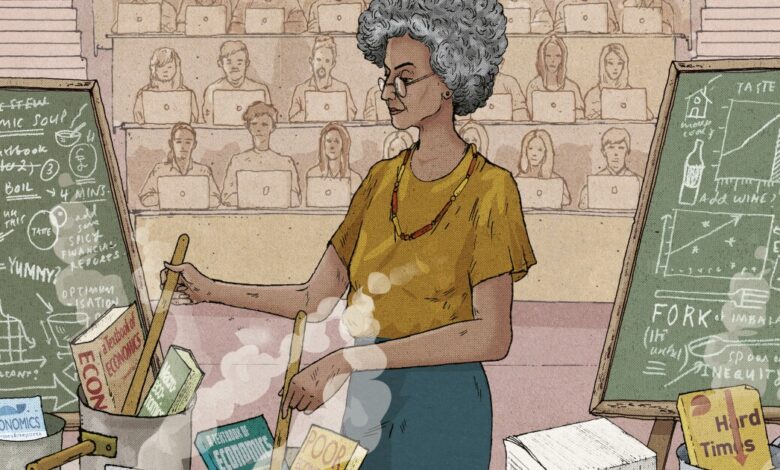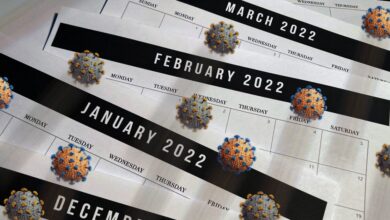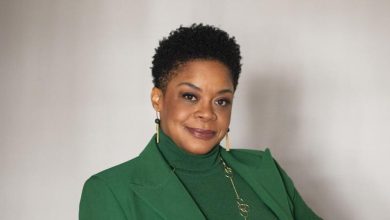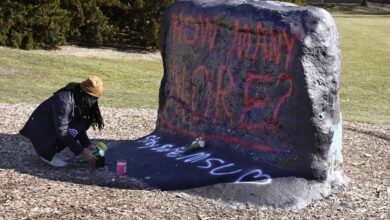Professors Have Been Urged to Adopt More-Effective Teaching Practices. Why Are Their Results So Mixed?

[ad_1]
Yet many haven’t. Some professors hold an unshakeable faith in the transmission model; others are open to the idea but have decided that they don’t have time to try it — or that they might be professionally penalized for putting that much time into their teaching when research output is the coin of the realm.
Scholars who study teaching say they can see how someone who knows about a step might simply forget it.
This is a story about a different facet of the problem: Professors who believe they are following that directive but have missed something important. It’s a bit like cooking, to pick up on an analogy one group of education researchers has used.
Much like a home cook who didn’t catch the bit about boiling the lasagna noodles first or whisking constantly while mixing a roux, professors who miss a key step in a student-centered teaching practice are unlikely to see the desired results. If they can’t figure out what went wrong, they may be left with the idea that this dish just isn’t any good.
Professors are highly educated. And those who’ve gone to the trouble to try to improve their teaching care about students and their learning. So why does this happen?
Researchers have homed in on several possible answers. The most elemental might be that professors typically arrive on the job with little, if any, training in teaching. They weren’t taught pedagogy, or how best to help students through biology or math. Yet research has shown that those forms of knowledge facilitate effective teaching, says Tessa C. Andrews, an associate professor of genetics at the University of Georgia who co-wrote a review of the research on this topic.
When professors lack that foundational knowledge, each teaching practice they hear about can seem like a “little trick,” Andrews says. “Like: I can do a jigsaw, or think-pair-share, or I can flip my class,” she says. But those professors’ teaching strategies, she adds, are “not connected to each other to create this coherent framework.” As a result, she says, “The thing you do becomes the focus, instead of why you’re doing it.”
That’s a big piece of the problem, but not the only one. Look through journal articles on teaching experiments and you’ll find it’s not always clear what, exactly, instructors did in their classrooms. It’s like trying to follow an old family recipe, written in shorthand.
Even if those journal articles were crystal clear, most professors don’t learn about evidence-based teaching practices directly from the literature. They learn of them in one-off workshops and conference sessions — or from informal discussions with colleagues. It’s like trying to cook something from watching a TikTok.
Cooking a new dish is a pretty good analogy for teaching a new way, says Charles Henderson, a professor of physics and director of the Mallinson Institute for Science Education at Western Michigan University. “But teaching in a classroom is at least an order of magnitude more complicated,” he says.
There’s a lot more going on in a classroom than in a home kitchen. Professors are working with dozens, or hundreds, of students with varying abilities and interests, in real time, in an uncontrolled setting. Scholars who study teaching say they can see how someone who knows about a step might simply forget it.
So when you put it all together, it’s no wonder that professors’ forays into evidence-based teaching don’t always go as planned. That matters because it can chip away at the will of even the most motivated instructors to improve their teaching. And it matters because the way they’re actually teaching — not the way they think they’re teaching — is what shapes student learning.
In a nutshell, peer instruction is when a professor periodically poses a conceptual question during class and asks students to choose, on their own, an answer from a multiple-choice set (often, but not always, using clickers). Students then discuss the question in small groups, learning from one another’s perspectives and ideas, and then answer it again. Their answers reveal to the professor how well they understand the material, and the professor adjusts instruction accordingly.

Wesley Merritt for The Chronicle
But as it turns out, even those professors who think they’re following the recipe are often skipping a few steps.
A trio of physics-education researchers, including Henderson, dug into that discrepancy, interviewing three groups of physics professors: those who said they use peer instruction, those who said they used to use it, and those who said they knew about it but didn’t use it.
Their findings, published in a 2016 article, are revealing. The researchers asked the professors detailed questions about their classroom practices and then compared those actions with a list of nine features of peer instruction they had created and run past other experts, including Mazur.
Professors’ accounts of whether they used peer instruction, they found, were only loosely related to how many of those features they were using.
What was going on here?
Part of the issue, the researchers found, is plain old confusion over terminology. Some instructors thought of peer instruction as a specific approach that more-or-less matches the one developed by Mazur, while others used it loosely, to describe just about any instance of students working collaboratively.
When the researchers asked their interview subjects how they first learned about peer instruction, many more cited informal discussions with colleagues than cited more formal channels like workshops. Even fewer pointed to a book or an article.
Adopting active learning is no small task. It takes a lot of time and energy, a bit of courage, and perhaps some humility. It also takes knowledge — and not just one kind.
So even when there’s a really well-developed recipe, professors aren’t necessarily reading it. They’re hearing someone who’s followed it before describe how they did it, like that primary-school activity where kids give instructions for making a peanut butter and jelly sandwich and the teacher follows them literally, to sometimes hilarious results.
But wait, you might say. Teaching is contextual. Maybe the professors who followed just a few of the features of peer instruction were making an intentional modification. The researchers don’t think that’s what’s happening. Nearly half of the professors interviewed — all of whom, remember, said they were familiar with peer instruction — didn’t indicate awareness of any of its features, beyond that students work together.
And while modifications to a teaching strategy can be a great way to experiment and fine-tune, some of the steps really can’t be skipped.
Here’s an example. Before students discuss the conceptual question with their classmates, the recipe says they’re supposed to commit to one of the multiple-choice answers individually. That’s a step some professors omit. Henderson can see why. Dealing with clickers can be a time-consuming annoyance; and students don’t always enjoy providing an answer that might be wrong.
But that step, he says, is important. It makes students aware of whether or not they could get to the right answer on their own. Seeing the gaps in their own understanding primes students to learn. Without that stark realization, it’s easy for them to nod along, telling themselves they knew that already, even if they didn’t.
Why don’t professors who use peer instruction all recognize this? They might not have enough foundational knowledge about how students learn to understand that this step is part of the process.
“If you believe knowledge is transmitted from the instructor to students, if you have that kind of view, you are going to focus on yourself, as the instructor,” says Soonhye Park, a professor of science education at North Carolina State University. “If you think knowledge is constructed by the students, your focus shifts toward the students.” A professor with the first notion of teaching might spend time developing a good lecture. A professor with the second, though, has to get under the hood of how students think, and then respond to that.
Park’s research focuses on elementary and secondary schools — where there’s agreement that teachers need to understand students, not just content. But research has found that this is also true in college. One illuminating illustration comes from a study of a Xavier University math professor who shifted from traditional teaching to an inquiry-oriented curriculum in his differential-equations course. The latter approach guides students through problem-solving activities to help them discover core ideas for themselves.
The Xavier professor, Bernd Rossa, let two education researchers follow along as he made the change, in 2004. One scholar observed and recorded Rossa’s classes, debriefing him afterward. The other worked separately, reading reflections written by Rossa on themes related to questions about the knowledge a professor needs to change the way he teaches. All three professors collaborated on the analysis, and they detailed their findings in a paper published in 2007.
No one doubted Rossa’s knowledge of mathematics, which the researchers, Joseph F. Wagner (a departmental colleague of Rossa’s familiar with the new curriculum) and Natasha M. Speer, argued had allowed them to delve especially into the other kinds of knowledge required to effectively implement the inquiry-based curriculum.
If you think knowledge is constructed by the students, your focus shifts toward the students.
Math-education scholars have broken the mathematical knowledge needed for teaching into two parts: subject-matter knowledge, and pedagogical-content knowledge, which concerns how students learn in the discipline.
Subject-matter knowledge might sound like something professors already possess and take with them to class. But the researchers have identified a piece of it that’s actually specific to teaching, since explaining something to students requires a different understanding than being able to work through it oneself.
A good math teacher, then, develops a kind of mathematical knowledge that a math expert who’s not teaching would not have.
In higher ed, teaching is often seen as something anyone who knows the content can automatically do. But the evidence suggests instead that teaching is an intellectual exercise that adds to subject-matter expertise.
This teaching-specific math knowledge, the researchers note, could be acquired in teacher preparation or professional development, however, it’s usually created on the job. As a result, it’s tightly aligned with a professor’s teaching approach. When Rossa embarked on an inquiry-based model, the mathematical teaching knowledge he’d built up teaching in a traditional manner might not apply.
The research team identified a number of places where this created challenges for Rossa. The inquiry-based curriculum changed the way he used class time and the kinds of work students did. Rossa found he couldn’t reliably predict how class discussions would play out, and he struggled to envision the pace of the course. He wasn’t always sure what, or how much, his students were learning.
None of those issues are insurmountable, and reading the study, one easily imagines Rossa would continue to get better at teaching in this new way. But it does suggest that professors who pursue evidence-based teaching approaches would benefit from support.
That’s something Speer, an associate professor of mathematics education at the University of Maine at Orono, is working on. These days, she’s part of a team running a professional-development program for math professors who are in charge of preparing their department’s TAs. The program is designed to give those faculty members, and the future instructors they will prepare, a better grounding in those forms of knowledge.
“We decided early on we were going to take a stance about certain things,” Speer says. “One of those was that we were going to say we know things from research about what good teaching is.” The program also emphasizes the knowledge needed to do that kind of teaching, adds Speer, who is one of Tessa Andrews’s co-authors on the research review of teaching knowledge.
Many teaching experts would like to see graduate students learn more about teaching and learning as a matter of course. But it can be a tough sell. Even when grad students want to pursue such professional development, and recognize that teaching will be a major prong of most academic careers, their mentors may discourage it, noting — not incorrectly — that it won’t be much valued on the job market, especially compared with the research they could be doing in that time.
Weaving this material into TA preparation is a clever solution. Whatever they see as the proper priorities for graduate students, it’s hard for professors to argue against the idea of better-taught introductory courses in their own department, or TAs who can be more helpful.
Those well-prepared TAs, the thinking goes, will have the sort of teaching knowledge that will help them successfully employ a new teaching strategy down the road, even if they receive incomplete directions or insufficient guidance.
But even if such programs become more widespread, they won’t help all the professors who are already on the job. While colleges do offer professional development related to teaching, it reaches only a subset of instructors — usually the ones who are already working to improve their teaching. And in many cases, professional development is a brief, one-time overview.
“I worry that these short-term interventions that largely just introduce a teaching strategy are not helping folks to develop the more fundamental teaching knowledge that they need to use those strategies effectively,” Andrews says. “And therefore it may not in the end have the positive effects on students that everyone involved, the instructor and the professional developers, are aiming for.”
A more systematic approach to professional development may be in order, and some programs are pushing in that direction.
Erika Offerdahl, associate vice provost and director of the Transformational Change Initiative at Washington State University, says she’s recently started approaching faculty professional development differently. “Fifteen years ago I would have been much more apt to come in and try to convince them to care about teaching, and then give them a set of strategies they can try in their classroom, and then meet up with them later to help them refine their strategies to be more effective,” says Offerdahl, who also conducts discipline-based education research in biology.
“Now, I’m much more apt to help them develop a deeper understanding of how people learn from a neuroscientific and cognitive-psychology perspective, and have them develop a model for how students learn.” This, Offerdahl says, enables professors to choose a particular active-learning approach that works in their own teaching context.
Washington State University takes this approach in a longer-term faculty-development program, the LIFT Faculty Fellowship (Learn. Inspire. Foster. Transform.), which is designed to build out the knowledge professors need to effectively use evidence-based teaching strategies as it trains them in active learning and social-behavioral interventions focused on mindfulness, belonging, and social connection.
There’s a role here, too, for education researchers. Not every evidence-based teaching practice has been broken into its critical components in the literature. If scholars figure out which aspects of a teaching approach get results, and explain that clearly, it will be easier for professional developers to emphasize and harder for rank-and-file faculty to miss. That’s something Offerdahl has done in her research, working to identify the important ingredients of formative assessment, in which students are given a way to test their understanding of the material so both they and the instructor can adjust as needed.
Researchers can also study the way a teaching approach is being adopted in the field, to determine whether the recipe is being followed faithfully — or which modifications yield more promising results that instructors may wish to replicate.
And there is another tried-and-true way professors can gain the kind of knowledge that Rossa realized he was missing, Henderson points out: They can co-teach with a colleague who’s already adept in that approach.
This support is something departments can formalize, especially for new instructors — or those learning a new way to cook.
[ad_2]
Source link






